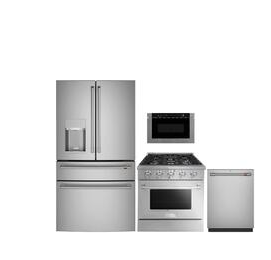How to save energy with your convection oven

Before we get into saving ways, it's important to clear up one of the most common misconceptions regarding the notion of a convection oven, which is that it has nothing to do with traditional ovens, despite the fact that the phrase seems to be grammatically correct.
The fundamental difference between a residential convection oven and a traditional oven is that the latter uses electric or gas resistances to heat. These methods can also be used to heat the convection oven, but it includes an integrated ventilation system that enables hot air to reach every part of the oven. What exactly does this imply? That the temperature in a convection oven will always be consistent at all levels, much as when cooking food. With this method, there will be no more done and less done components.
You'll see that the convection oven saves energy for you and your company since it cooks all of your food to perfection even at the lowest temperature. You'll be able to lower batch sizes, which will save you a lot of time.
EQUIP YOUR RESTAURANT WITH THE BEST CONVECTION OVEN

Now that you know that an industrial convection oven may help your company in more ways than one, you may be wondering, "What is the best convection oven I can put in my kitchen?"
The fact is that there is no one-size-fits-all solution to this topic. The best way is to assess your requirements first, and then look at the five different kinds of convection ovens available:
- Steam
We can cook at a low temperature with them since they mix heat and steam. Furthermore, steam cooking is one of the most environmentally friendly methods of cooking.
-Sous Vide
This sort of oven cooks at a low temperature while under vacuum. As a result, food must be stored in an airtight container. The meal, of course, keeps its inherent taste.
- Mixed
These ovens can cook, heat, defrost, and cook depending on the model. Vacuum cooking is an alternative in certain cases. They are, of course, the most expensive on the list.
- Convection
They are the most prevalent and are intended for use in the kitchen. They're ideal for companies that wish to save time and money.
ADVANTAGES AND DISADVANTAGES OF CONVECTION OVENS

It's now time to discuss the benefits and drawbacks of putting a convection oven in your kitchen. We had assumed that it would result in energy savings. This is due to the fact that the meals are prepared in a short amount of time and at a lower temperature. These are the primary benefits that result in time savings.
For example, all of the food is cooked equally, so there will never be portions of the same overcooked or undercooked dish. Another benefit is that it doesn't matter where the tray is placed. Although the tray should nearly always be placed in the middle of a regular oven, it makes no difference here since everything cooks in the same manner.
There are some disadvantages as well. For instance, this sort of convection oven is more prone to malfunctions and is incompatible with some pastry recipes.










